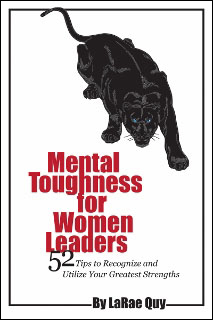First came the Great Resignation, only to be followed by the Great Emergence as the workplace drags itself into a post-pandemic existence. The emerging reality for leaders is that Covid has made well-being an urgent priority. A recent Gallop Poll indicates that “fewer than one in four U.S. employees feel strongly that their organization cares about their well-being, the lowest percentage in nearly a decade.”
The same study also found that teams who feel leadership cares about their well-being achieve higher customer engagement, profitability, productivity, lower turnover, and fewer safety incidents. These are all critical considerations but it underscores how most current research on leadership behavior focuses on employee’s performance rather than the employee themselves.
Employee Experience (EX) is just now beginning to get the attention it deserves. It’s not at all about benefits and perks. A lot of companies mistakenly think that because they “offer free massages and beer on Fridays that they’ve checked off the employee experience box.” Or, they hand it off to HR and hope they’ve heard the last of it.
Engagement and well-being place importance on loving what we do and being motivated to achieve goals. The Great Emergence is the recognition that our career well-being intersects with our overall satisfaction with life.
While not a lot of positive things can be said about Covid, it has highlighted the need for leaders to consider the well-being of their employees seriously. People’s expectations of work have fundamentally changed after their experiences with the pandemic.
The terms “well-being” and “wellness” are often used interchangeably, but they mean two very different things. Wellness describes a healthy lifestyle, whereas well-being encompasses the broader holistic dimensions of a well-lived life, of which wellness is only one part.
Here are 4 practical ways leaders can improve engagement and well-being:
1. Understand Our Intrinsic Need For Well-being and Motivation

Researchers have found that people have 3 innate psychological needs that affect their well-being and motivation. We actively seek ways to meet these needs because our brain recognizes them as a reward; if we’re not able to meet them, our brain registers this as a threat.
Known by the acronym ARC, the 3 needs are:
Autonomy.
- People feel a sense of ownership and direction in their work.
- Provide input when deciding how work gets done.
- Express ideas and opinions.
- High energy and enthusiasm
Relatedness:
- People feel connected, understood, and valued by others.
- They are committed emotionally to the organization and their team.
- Like and get along with colleagues.
- Feel valued by people at work.
Competence:
- People feel they make a difference.
- Use their strengths every day.
- Confident in their abilities.
- Feel a sense of accomplishment in their jobs.
The ARC approach doesn’t ask people to be touchy-feely; instead, it nudges people to care about others. Critical to the success of a well-being program is the demonstration of empathy, and this is most easily accomplished by asking quality questions. Not everyone welcomes an emotive approach or wants to bleed out their emotions and feelings, so it’s important that the questions promote thoughtful reflection about the issue at hand.
Empathy is simply the ability to understand and share the feelings of another. It doesn’t require special training or an emotive personality. It only requires that leaders regularly ask quality questions that make employees feel valued, capable, and in control.
Read more about empathy here.
Many people think that mental toughness is bulldozing your way through obstacles. That might work in football, but not in life. Instead, mentally strong people understand how to manage their thoughts, emotions, and behavior in ways that will set them up for success. Emotional Intelligence allows leaders to understand not only others in greater depth but themselves as well.
Are you mentally tough? Take this evidence-based Mental Toughness Assessment.
How To Make It Work For You: When developing a well-being initiative, align it with the ARC in mind.
- Clarify how it will help people live fuller lives.
- Assure people that when they take an active role, others will listen.
- Provide meaningful feedback.
- Take care not to offer extrinsic rewards which can undercut the intrinsic motivation that wellbeing provides people.
2. Start At The Top
Often, there is a significant divergence between what leaders believe is happening and what their teams perceive to be happening. So, it takes more than a rubber stamp of approval by leadership to ensure well-being programs attract the employee’s attention.
Workplace well-being programs aren’t cheap. RAND estimates that programs that support healthy outcomes among employees are a $6 billion industry in the U.S.
But, people must be convinced that well-being is more than a passing fad. They need to see how it will help them to solve problems both at work and at home. Research shows that leaders in tune with their people can target meaningful activities rather than one more thing jammed into their already busy schedule. When daily well-being habits infuse the culture of the company, it nurtures a fertile climate for ongoing employee development, engagement, and motivation.
The folks in the corner offices set the organizational culture. Well-being must flow downhill, from top leadership to the rank and file. To fully integrate the importance of well-being into the company’s culture, robust discussions on these programs must start at the Board level.
How To Make It Work For You: To get the best results, get buy-in from your employees. Consider people’s lived experiences; get their opinion on what well-being looks like to them and their thoughts on work-life balance, leisure, job quality, social connections, and trust.
3. Create A Positive Culture

Company culture is the result of values + behavior. It’s what people in the workplace do when no one is looking.
One of the best ways to ensure that well-being initiatives are effective is to recruit influencers from within the organization. Influencers earn their name for a good reason—they influence how people think and behave.
It’s been said that managers do things right, while leaders do the right thing. Now is the time for top leadership to do the right thing and be an influencer among their teams. Unlike many wellness programs, well-being initiatives don’t require a lot of specialized training. All it takes is to 1) observe, 2) listen, and 3) ask quality questions. And when leaders do those 3 things, others will follow their example.
While leaders can be influencers in the workplace, they also need to recruit influencers across a range of work groups for a more profound and more impactful result.
How To Make It Work For You:
Observe. Which employees exhibit low energy? Fail to deliver on timelines? Appear distracted? Take a lot of sick days? Come in late? Keep to themselves?
Listen. Let people know that you’ve observed their behavior in a non-judgmental way. Open the topic up and then listen to their response. Listening well takes time, skill, and readiness to slow down, to let go of expectations, judgments, boredom, self-assertiveness, and defensiveness. Before helping people, you need to tell them that you understand their fears and anxieties are real. You need to listen to them and let them know you are there to help them get through these difficult times.
Ask. One of the best questions is, “How are things going for you today?” A more general question like, “How are things going?” is usually answered with an automatic response—“Fine.” But when you add the phrase “for you today,” it acknowledges that we all have highs and lows and that you care about how they are doing now.
Finally, follow up with the individual to let them know you heard them and that you care.
4. Share The Joy
Studies show that social support improves well-being. For example, people who feel connected have lower levels of anxiety and depression.
Further research reveals that social connectedness is waning at an alarming rate in the U.S. The study showed that in 1985 Americans claimed to have 3 close friends. By 2004, it had dropped to zero, with over 25% of Americans saying they have no one they can confide with.
Social connectedness can eliminate poor morale in the workplace. Here is an example:
LinkedIn is a huge platform for professional networking, with over 590 million members in over 200 countries and territories. The company was created with a culture of transformation, integrity, collaboration, humor, and productivity. 2015 ushered in new challenges for the company, and in response, LinkedIn launched a new employee recognition program called Bravo!
Through the new program, any employee could recognize a colleague who exhibited outstanding performance or efforts at work and demonstrated LinkedIn’s core values. Recognized employees were offered a variety of award levels and personalized rewards, including gift cards and merchandise across all countries where employees reside. In the first 18 months of the Bravo! program, 24% of employees actively recognized another employee.
LinkedIn is one example of how well-being practices can be integrated into the workplace. A well-being initiative can enable employees and leaders to start daily micro-steps and actions that have a lasting positive impact on the company’s culture.
How To Make It Work For You: Let’s face it—leaders set the tone for well-being in the workplace. To be effective, you need to model core behaviors to your team. This demonstrates your purposeful follow-through on actions that support well-being.
© 2023 LaRae Quy. All rights reserved.
You can follow me on Twitter, Facebook, Instagram, AND LinkedIn
Are you mentally tough? Take this evidence-based, FREE Mental Toughness Assessment.
Check out my new online training program at www.SecretsOfAStrongMind.com
Get my book, “Secrets of a Strong Mind (second edition): How To Build Inner Strength To Overcome Life’s Obstacles”

Author of “Mental Toughness for Women Leaders: 52 Tips To Recognize and Utilize Your Greatest Strengths”



Recent Comments